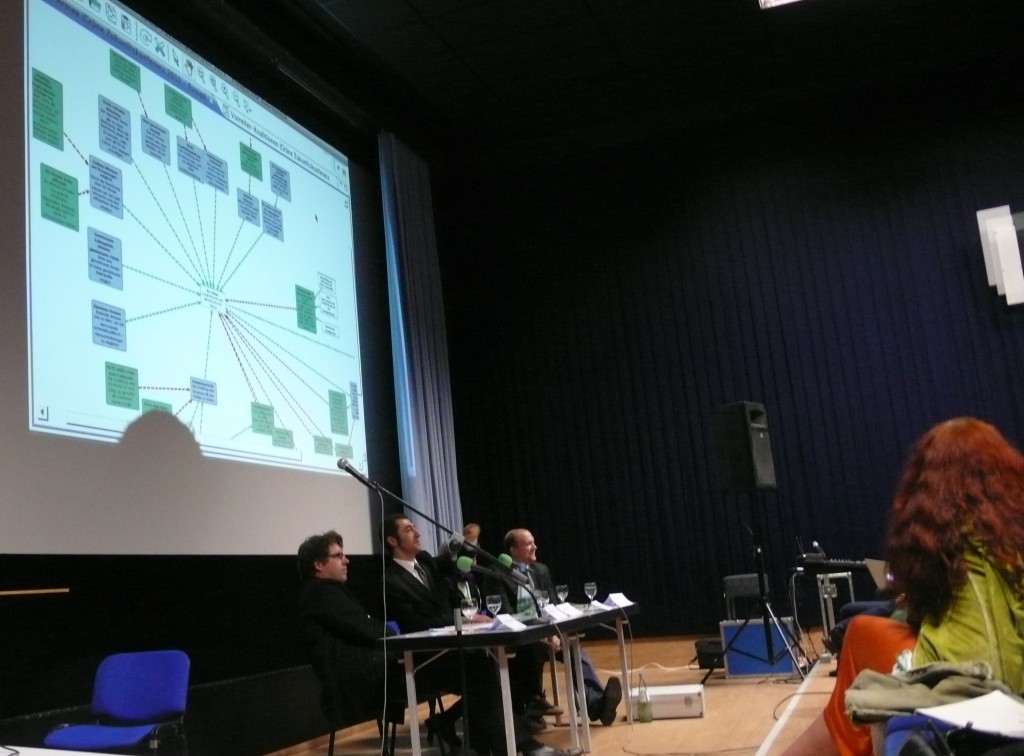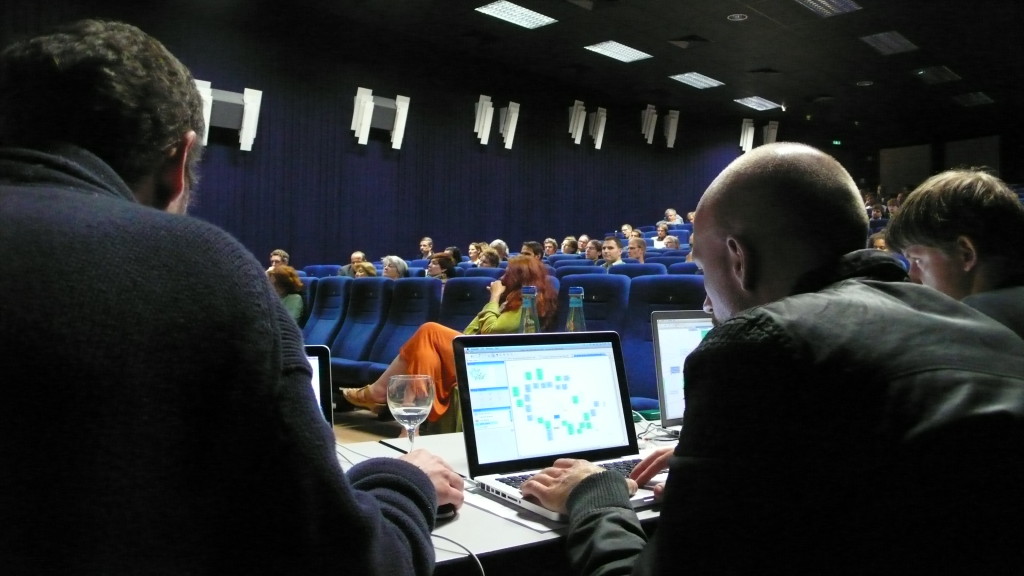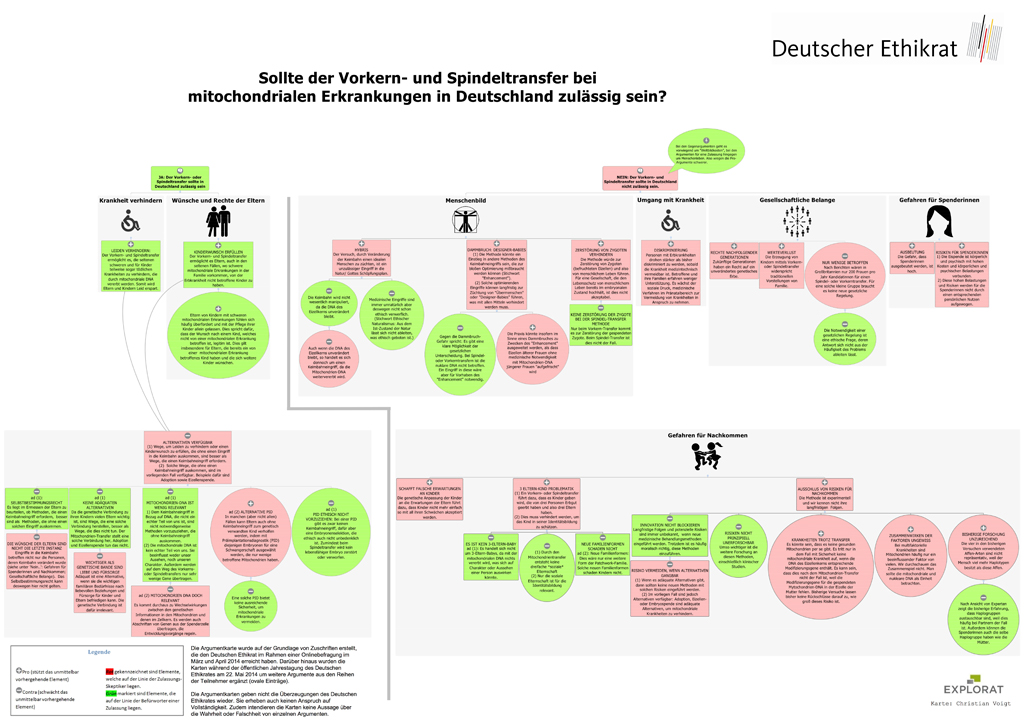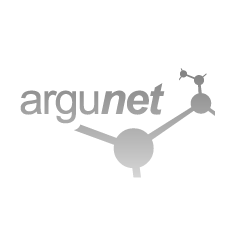How can argument maps be used for debate moderation? In this post three short “live reconstruction” case studies from 2007, 2011 and 2014 are presented. These cases show that the challenges of the approach are not so much of a technical but of a methodological nature. Even if the technology works perfectly it is difficult to get the conditions right so that the “live reconstruction” is more than just a nice gimmick.

How can argument maps be used for debate moderation? In this post three short “live reconstruction” case studies from 2007, 2011 and 2014 are presented.
In a “live reconstruction” the arguments of the statements made during a live discussion are reconstructed and visualised in real-time during the event. The most impressive “live reconstruction” technology so far comes from ARG-tech at the University of Dundee. ARG-tech used a huge touchscreen, the “AnalysisWall”, and a large team of analysts to transcribe, segment and analyse an episode of the BBC radio show “The Moral Maze” in 2012.
The technology we have used so far has been much simpler. But the following use cases show that the problems are not so much of technical but of a methodological nature. Even if working perfectly, it is an open question whether the technology is just a nice gimmick or if it produces real benefits for the participants of live discussions. The following cases show that such benefits are difficult to achieve if analysts, moderators, clients and participants have conflicting aims and expectations.
What is a “live reconstruction”?
Our original concept of “live reconstruction” can be characterized in the following way:
- participants argue about a concrete controversial thesis or question.
- three to four analysts work on the reconstruction of the debate with Argunet. Because Argunet is a client-server software they can work on the same map from different computers,
- inserting important theses,
- summarizing the arguments in short descriptions and giving them telling titles (there is not enough time for detailed logical reconstruction),
- sketching the relations between arguments and theses,
- layouting the argument graph.
- the emerging argument map is projected live on a big screen. Arguments ‘magically’ pop up one by one.
- the moderator uses the resulting map to structure the ongoing debate and to summarize results, e.g. she
- asks participants whether the reconstruction is adequate,
- directs attention to arguments that were neglected or to implicit assumptions that were revealed,
- shows what the central claims are and what dialectical role they play in different arguments,
- participants can refer to specific arguments in the debate in order to
- express their agreement or disagreement,
- add new rebuttals or support, or
- clarify their previously made statements.
- the argument map can be used to document the discussion results.
First case study: Long night of the sciences 2007
2007 was the first time we gave the “live reconstruction” a try at the “Lange Nacht der Wissenschaft” (long night of the sciences) a popular event in Berlin, where universities and other science institutions open up for the general public.
Overall this has been a very positive experience:
- the argument map was a useful moderation tool that made it easier for the moderator to keep an overview,
- participants used the map in their statements to refer to arguments,
- participants collaborated on making the map better and more representative instead of pushing and clinging to their points of view,
- this led to structured, fair and non-confrontative discussion.
At the time we were quite enthusiastic about the prospects of the method. Time has shown that this success depended crucially on the non-typical “ideal” conditions of this use case:
- it was a pro bono experiment, there were no costs to consider,
- the moderator was part of our team and an expert in argumentation theory,
- guests were expecting an experiment and came to learn about the method of argument analysis and reconstruction,
- the topic of the debate was secondary and was decided upon by the audience at the beginning of the experiment.
Second case study: Future Congress of the German Green Party 2011 (Zukunftskongress der Grünen)

In 2011 the German Green Party organized a “Future Congress” as an open and innovative forum for discussions about their party platform. The congress was organized in 14 workshops, some of which were moderated by the party leaders Claudia Roth and Cem Özdemir. We were hired to conduct live reconstructions of two workshops, one on “social justice” and one on a “common European defence policy”. Both workshops were moderated by Cem Özdemir. Our team consisted of one coordinator, two “reconstruction analysts” and one co-moderator. The boundary conditions were challenging, to say the least:
- a huge audience and speakers list,
- limited time,
- the first topic was very broad and there was no clear focus of the discussion,
- many statements from the audience were very emotional and vague,
- the moderator was not an expert in argumentation theory, though we had the opportunity to introduce him to our method beforehand,
- the moderator was a party leader, and had to meet many expectations that were not easily reconcilable with using argument maps to structure the debate and keep the participants focused on specific points,
- because of this and the time restrictions our co-moderator could only play a small and very limited role.
Not all conditions were unfavorable. The Green Party agreed to pay for a team of four experts which is quite extraordinary, considering these were moderation expenses alone. Even with such a large team the reconstruction was very exhausting, stressful and difficult for the team; and it was hard to assess whether the live projection brought any benefits for the discussion, because of the lack of interaction. Though the feedback we got was very positive, we were somewhat disillusioned.
Third case study: Annual convention of the German ethics council 2014
In 2014 we were hired by the German Ethics Council for its annual convention and gave the concept another chance: In a collaboration with Ralph Groetker from explorat we tried to develop ideas to overcome the weaknesses of our concept. We changed the process to make it financially more feasible, decrease the workload for the analysts and increase the benefits of the resulting maps. This process was tested in three parallel workshops on “reproductive ethics”. The changes were the following:
- Due to financial limitations we could only use one analyst per workshop.
- This made it impossible to create a new reconstruction from scratch live; instead we prepared maps beforehand that were based on an online survey of the invited guests and additional research.
- These maps were given to the members of the Ethics Council and their staff beforehand. In several rounds they were revised and enhanced.
- Every guest got a conference binder that included these argument maps; additionally the maps were presented on big posters at the conference.
- These maps were than augmented live with simple comments that described important claims and additional arguments of the participants, without reconstructing the precise relations of these arguments.
- Directly after the workshops the new arguments were added with post-its to the posters.
- Additionally the maps were used to document the results.
- To simplify the process even more we agreed to use the mindmapping software XMind instead of Argunet. Though this made it possible to use icons as mnemonic devices there were some limitations we think speak against using such generic software in the future (for example, the graph has to be hierarchic and argument groups have to be sub-trees).
We think that these changes proved largely sucessful. It made a huge difference for the reconstruction process that the analysts could build on already existing maps. Even though we reduced the team from three analysts to one single analyst, the reconstruction of the new arguments was feasible. The feedback was once again very positive.
Even so, this was a mixed experience, because in two of three workshops the moderators didn’t want to get distracted or restricted by the maps and refused to use live projections. In these workshops the live reconstruction had no influence on the discussion (though it was used for documentation purposes). But maybe this didn’t make such a huge difference, because in all workshops the participants had read our arguments beforehand and we got the impression that some of them used the maps to formulate their statements.

Conclusion:
Live reconstructions can have real benefits if the boundary conditions are just right. But in real-world deployment it is difficult to find and establish these conditions. The most important ones are:
- Preparation: The live reconstruction can only augment an already existing map, so it has to be possible to prepare such a map beforehand.
- Preparation: Clients and moderators have to be included in the reconstruction process as early as possible.
- Moderation: The moderator has to be willing and able to use the map; realistically, this will only be the case if the moderator has been trained in argument reconstruction and analysis.
- Topic: The questions to-be-discussed must be concrete and controversial.
In many cases moderators, clients and participants have conflicting expectations and aims that make it impossible to create these conditions. Under such circumstances further revisions to the process are needed to make argument maps useful for debate moderation.

Hello, a réal professionnel modérator should be willing to guide and structure a debate and use a dédicated software if necessary. Even participants should have basics skills to participate constructively to a debate (like staying focused, avoid contradictory statements, These are the conditions for effective meetings and people should start learning how to debate at primary school already. Keep up the good work. Thanks